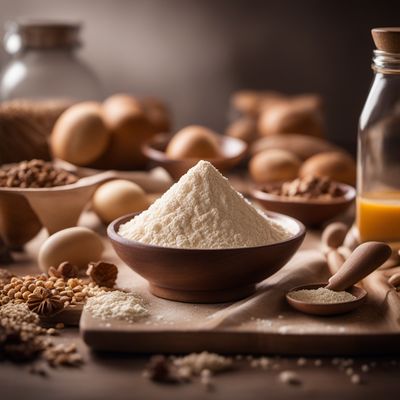
Ingredient
Preparations for gelling home-made food
The Art of Culinary Alchemy: Mastering the Science of Gelling
Gelling agents are substances that have the ability to form a gel-like structure when combined with liquid ingredients. They come in various forms, including powders, flakes, and sheets, and each type offers unique properties and applications. Gelling agents such as gelatin, agar-agar, and pectin are commonly used in both sweet and savory dishes to create a wide range of textures, from firm and bouncy to soft and creamy.
Origins and history
The use of gelling agents in culinary preparations dates back centuries, with early civilizations utilizing natural substances like seaweed and animal bones to achieve gelling effects. Over time, advancements in food science and technology have led to the development of refined gelling agents that offer improved texture, stability, and versatility. Today, gelling agents play a crucial role in the creation of various dishes and are widely used in both home kitchens and professional culinary settings.
Nutritional information
Gelling agents provide thickening and stabilizing properties to food preparations, allowing for the creation of a wide range of textures. They are often low in calories and fat, making them a popular choice for those seeking healthier alternatives to traditional thickeners. Additionally, some gelling agents, such as agar-agar, offer unique health benefits, including potential digestive and immune system support.
Allergens
Gelling agents derived from animal sources, such as gelatin, may not be suitable for individuals following a vegetarian or vegan diet. Additionally, some individuals may have allergies or sensitivities to specific gelling agents, such as agar-agar or carrageenan. It is important to read product labels and consult allergen information when using gelling agents.
How to select
When selecting gelling agents, consider the specific requirements of your recipe. Gelatin, for example, is available in both powdered and sheet form, with the latter often preferred for delicate desserts. Agar-agar is a popular choice for vegan and vegetarian recipes, while pectin is commonly used in fruit preserves and jellies. Look for reputable brands that offer high-quality gelling agents for optimal results.
Storage recommendations
To maintain the freshness and effectiveness of gelling agents, store them in a cool, dry place away from moisture and direct sunlight. Ensure that the packaging is tightly sealed to prevent exposure to air, which can affect their performance. It is also important to check the expiration date and discard any gelling agents that have passed their shelf life.
How to produce
Producing gelling agents typically requires specialized equipment and processes that may not be feasible for amateur production. However, some gelling agents, such as pectin, can be extracted from natural sources like fruits at home with the right techniques and tools.
Preparation tips
The preparation and usage of gelling agents vary depending on the specific type and recipe. Follow the instructions provided on the packaging or refer to trusted culinary resources for guidance. It is essential to measure the gelling agent accurately and dissolve it properly in the liquid ingredients to achieve the desired texture. Experiment with different gelling agents and ratios to discover the perfect balance for your culinary creations.
Substitutions
Agar-agar can be used as a substitute for gelatin in vegetarian or vegan recipes, offering similar gelling properties. Pectin can be used as a substitute for agar-agar in some recipes, although it may result in a slightly different texture. Xanthan gum can be used as a substitute for gelling agents in certain applications, providing thickening and stabilizing properties.
Culinary uses
Gelling agents are widely used in the culinary world to create a variety of dishes. Gelatin is commonly used in desserts like panna cotta, mousses, and marshmallows. Agar-agar is often used in Asian desserts, jellies, and vegan gummies. Pectin is a key ingredient in fruit preserves, jams, and jellies. Additionally, gelling agents can be used to create custards, creams, and even savory dishes like terrines and aspic.
Availability
Gelling agents are commonly available in grocery stores, supermarkets, and specialty food stores. They can also be purchased online from various retailers that specialize in culinary ingredients and supplies.



